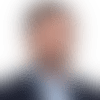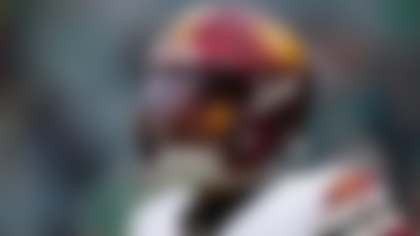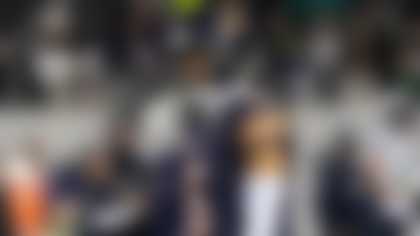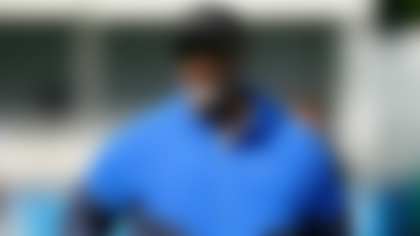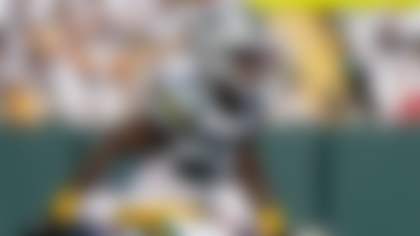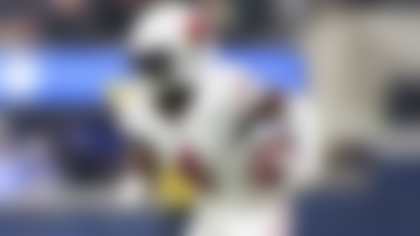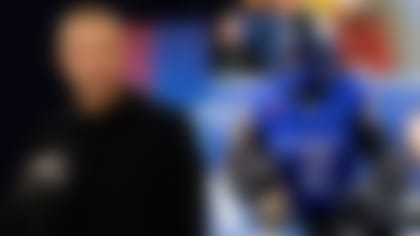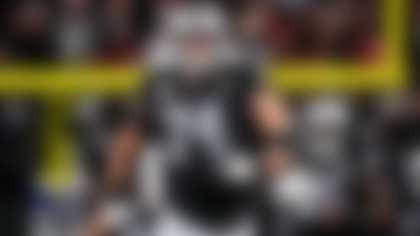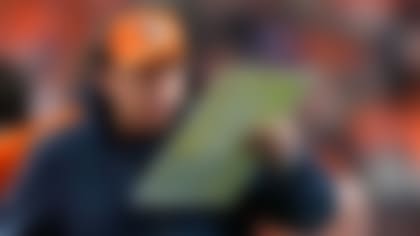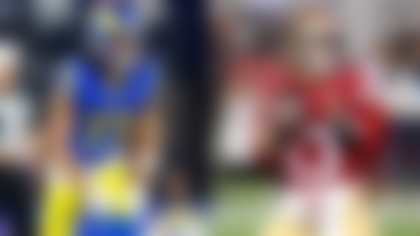The NFL will not discipline the Houston Texans for how it handled Tom Savage's concussion in a Week 14 loss to the San Francisco 49ers.
A joint NFL-NFL Players Association review concluded that while medical staff followed protocol, the outcome was "unacceptable and therefore further improvements in the protocol are necessary."
"The review showed that following a hard tackle, Mr. Savage was immediately removed from the game and evaluated for a concussion," the NFL and NFLPA said in a statement issued Friday. "The Unaffiliated Neurotrauma Consultant ("UNC") and team physician reviewed the initial broadcast video, saw the play and Mr. Savage's response and followed the Protocol by performing a complete sideline concussion evaluation on Mr. Savage, which he passed. The slow-motion video, which focused more directly on the fencing posture, was not broadcast until after the doctors had begun the sideline evaluation and thus was not seen by the medical staff prior to the evaluation. The Texans medical staff continued to monitor Mr. Savage after the initial evaluation and shortly after his return to the game, identified symptoms that had not been present during the sideline evaluation and took him to the locker room for further evaluation."
Following the Savage incident, the NFL, in conjunction with the NFL's independent Head, Neck and Spine Committee, added several improvements to the protocol. The enhancements included a centralized Unaffiliated Neurotrauma Consultant monitoring all games, defining 'no-go' criteria in which a player may not re-enter the game, and requiring a locker room concussion evaluation for all players demonstrating gross or sustained vertical instability.
The improvements include:
» Implementation of a pilot program utilizing a centralized UNC based at the league office to monitor the broadcast feeds of all games. The UNC will contact the team medical staff on the sideline should they observe any signs or symptoms warranting further evaluation.
» Defined impact seizure and fencing responses as independent signs of potential loss of consciousness, representing "No-Go" criteria under the current Protocol. Players who display either of these signs at any time shall be removed from play and may not return to the game.
» Requiring locker room concussion evaluation for all players demonstrating gross or sustained vertical instability (e.g., stumbling or falling to the ground when trying to stand).
» Officials, teammates, and coaching staffs have been instructed to take an injured player directly to a member of the medical team for appropriate evaluation, including a concussion assessment, if warranted.
» Requiring all players who undergo any concussion evaluation on game day to have a follow-up evaluation conducted the following day by a member of the medical staff.
» A third UNC to all playoff games and the Super Bowl to serve as a backup who can step in immediately should one of the original two UNCs be absent from the sideline for a time to attend to a more severely injured player.
Savage's head bounced off the turf after a crushing blow from 49ers pass rusher Elvis Dumervil in the second quarter, which left the quarterback shaking on the ground -- a disturbing moment caught on video. Savage briefly left the game but surprisingly returned for the next possession. He was later shelved for the rest of the contest.
Savage was diagnosed with a concussion and officially placed on injured reserve last week.
Dr. Thom Mayer, NLFPA Medical Director, and Dr. Allen Sills, NFL's Chief Medical Officer, spoke with NFL Network Insider Ian Rapoport about the process and explained why the Texans were not sanctioned for the handling of the situation.
"They followed the protocol as it existed then. So they were not [penalized]," Sills told Rapoport over the phone. "Now, we've gone back and done some things, made these changes. The outcome was unacceptable. So, while they followed the protocol, the outcome was unacceptable and we have to make sure it doesn't happen again."
Mayer told Rapoport that the video available to the sideline team physician immediately after the hit didn't show obvious signs that Savage might have suffered a concussion.
"The physician was examining the patient at the exact time everyone else was looking at the video [of Savage on the field]," Mayer said. "Dr. Sills actually looked at the video that was available to the team physician on the sidelines. If it showed any posturing, it wasn't obvious. If you can picture it, the view was from Savage's right shoulder, so you couldn't see his hands and it was hard to interpret. When this happens, it drives changes in the protocol as a result of this analysis. Not just changes but improvements. It strengthens the protocol. Any time a failure occurs there needs to be improvements."
The day after the game, coach Bill O'Brien defended his handling of the situation.
"At no point in my coaching career, have I ever passed the buck. In this case, I'm not passing the buck," he said.
Added O'Brien: "At no point in time in my coaching career, in my 25 years of coaching, I've been at Brown University, I've been at Georgia Tech, I've been at Duke, I've been at the University of Maryland, I've been the head coach at Penn State and I've been the head coach here, at no point in time is there anything more important to me than the safety of our players. I love our players and I care about them and I cannot stand when players get injured. Again with benefit of seeing the video that people are seeing, I would have never put him back in the game."
The decision comes a week after the league fined the Seattle Seahawks $100,000 for the handling of concussion protocol on a Russell Wilson hit. The NFL and NFLPA updated the protocol instruction for officials, teammates and coaches to take players directly to medical staff for concussion assessment.
Sills and Mayer added that they conducted a conference call with every head trainer, every neurologist, -- more than 400 people -- to review the changes that were immediately implemented under the revised concussion protocol.
The NFL has made 47 rule changes since 2002 to protect players, improve practice methods, better educate players and personnel on concussions and strengthen the league's medical protocols. The NFL deploys 29 medical professionals on the sidelines for each game. Working with the NFLPA, the league enforces a concussion protocol for players that has been instrumental in immediately identifying and diagnosing concussions and other head-related injuries.
